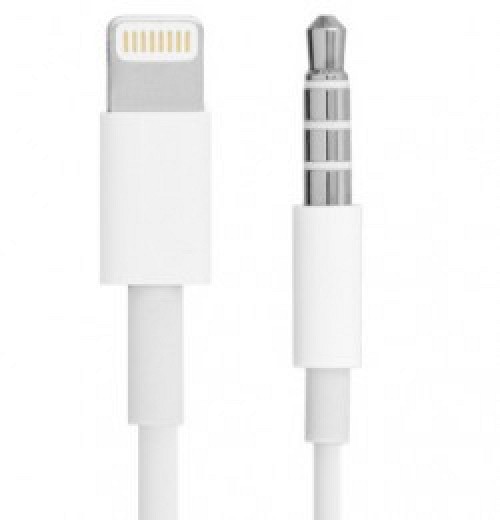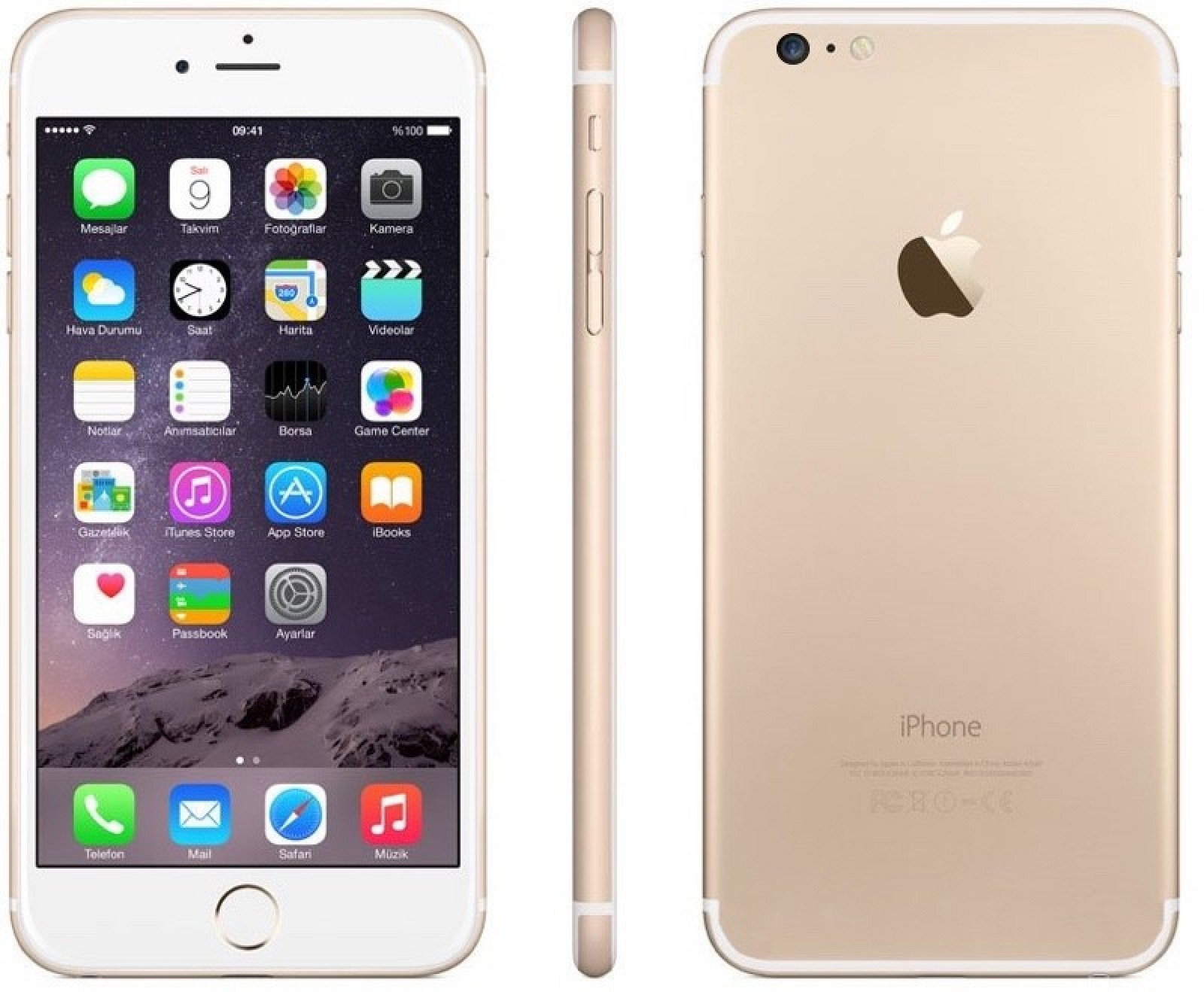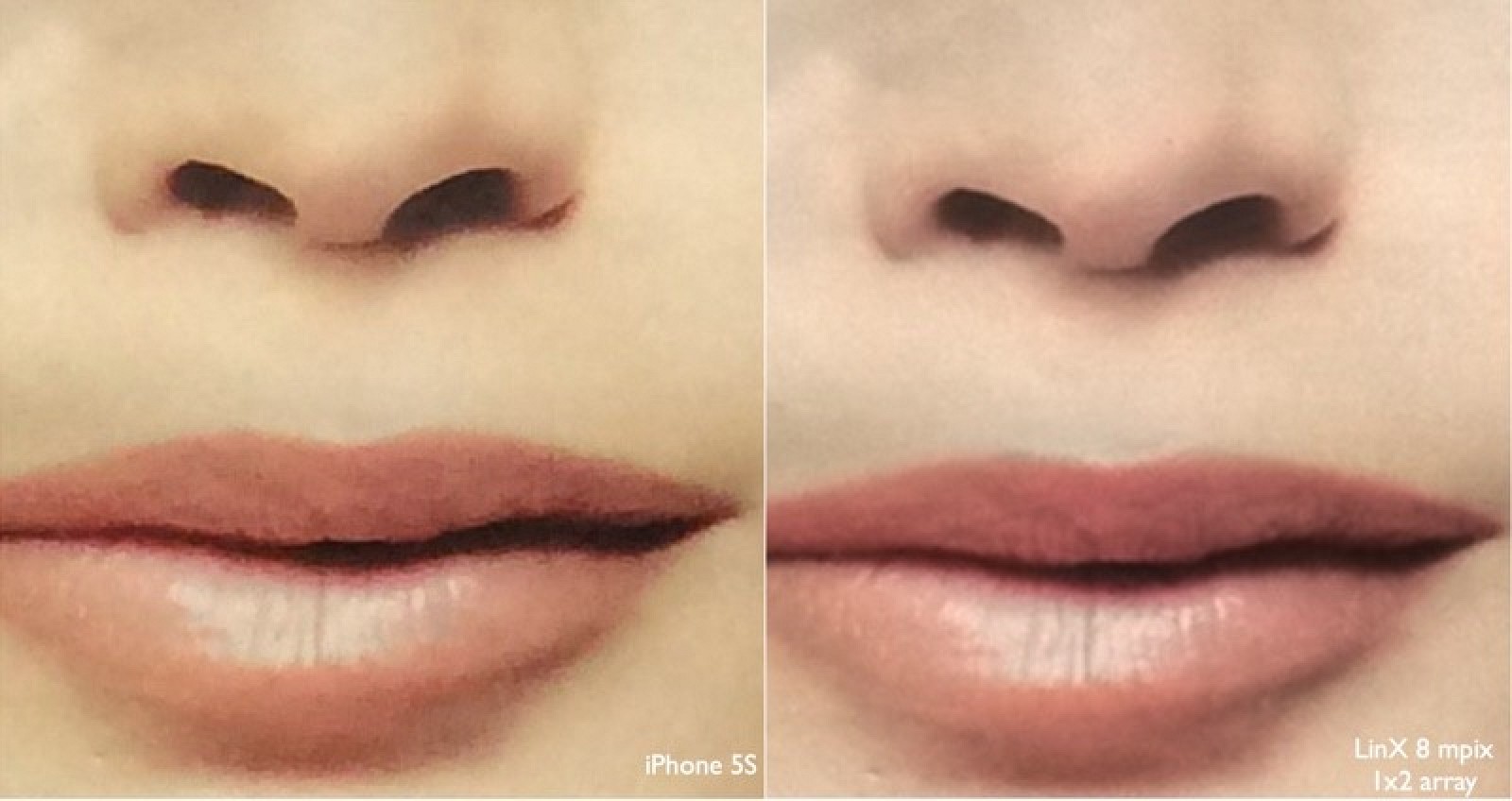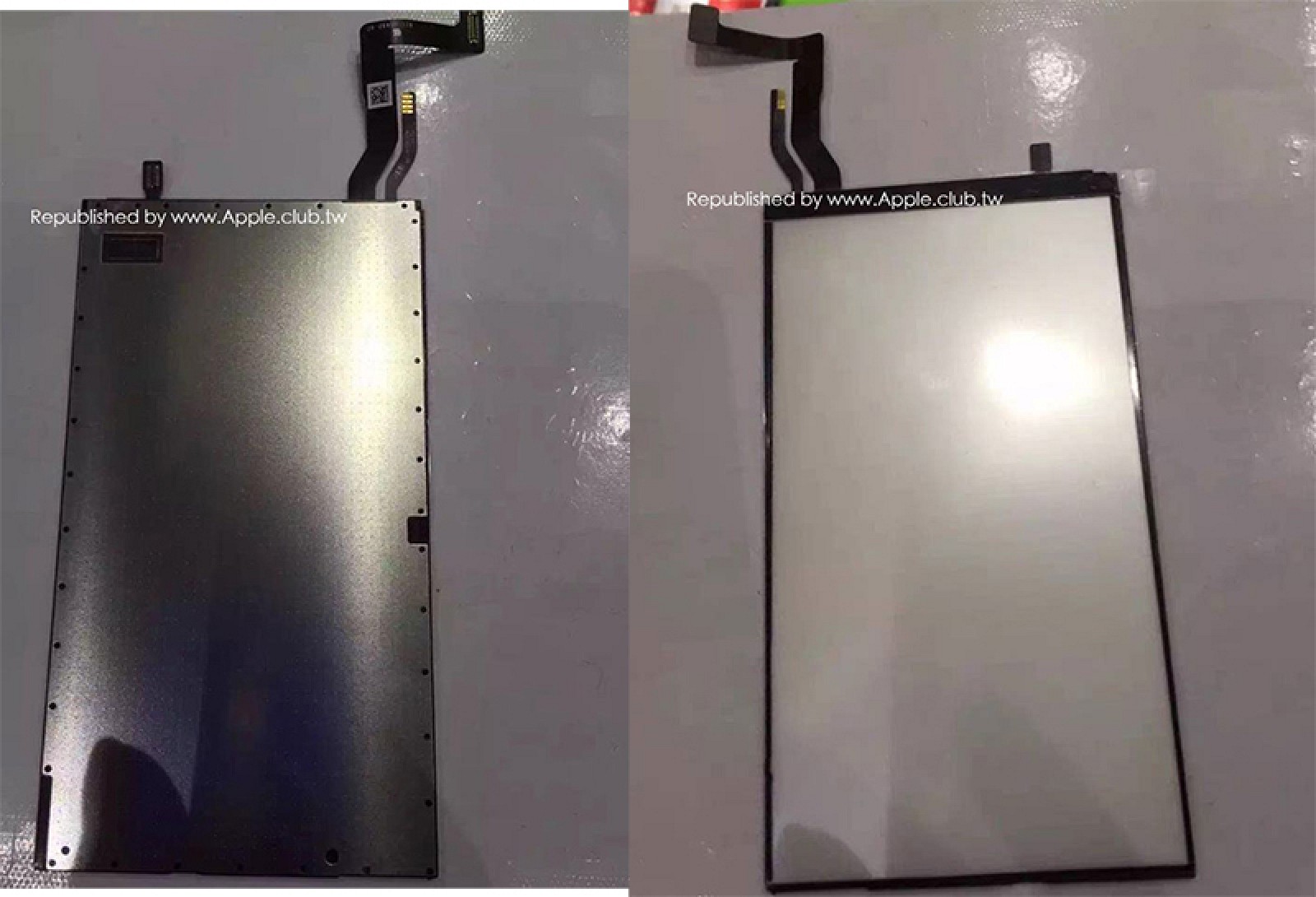iPhone 7
Coming in 2016
The iPhone 7 won't be released until the fall of 2016, so it's still several months off. Apple's current flagship devices are the iPhone 6s and the iPhone 6s Plus, released to the public in September of 2015. Though we have months to go until the iPhone 7 launches, rumors have already been trickling out, giving us some details on what we might see when the device is released.
Apple has used an alternating "S" naming formula to mark years where the iPhone does not receive a major redesign since the debut of the iPhone 3GS in 2009. Releases have been as follows:
2007 - iPhone
2008 - iPhone 3G
2009 - iPhone 3GS
2010 - iPhone 4 (new design)
2011 - iPhone 4s
2012 - iPhone 5 (new design)
2013 - iPhone 5s
2014 - iPhone 6 and iPhone 6 Plus (new design)
2015 - iPhone 6s and iPhone 6s Plus
2008 - iPhone 3G
2009 - iPhone 3GS
2010 - iPhone 4 (new design)
2011 - iPhone 4s
2012 - iPhone 5 (new design)
2013 - iPhone 5s
2014 - iPhone 6 and iPhone 6 Plus (new design)
2015 - iPhone 6s and iPhone 6s Plus
The next-generation iPhone is expected to be called the iPhone 7. 2015 marked an "S" iPhone upgrade year that introduced new features such as an improved camera and a better processor, but 2016 will bring an even-year upgrade that will likely include an all-new iPhone design.
Apple is said to be working on finalizing the iPhone 7 design so we don't know exactly what it will look like, but a reliable source tells MacRumors that it continue to use a design similar to the design of the iPhone 6s, but without a rear protruding camera and with no antenna bands across the back of the device. Antenna bands are expected to remain at the top, bottom, and sides of the iPhone.

The iPhone 7's body could also be made out of a new composite material that improves the water resistance of the device.
Internal specs aren't yet known, but we can speculate that Apple will continue on its path of introducing more powerful, efficient devices that grow thinner with each design iteration. The iPhone 7 and iPhone 7 Plus are expected to include next-generation A10 processors manufactured by TSMC.
It's likely Apple will continue releasing two versions of each iPhone, so we will see an iPhone 7 and an iPhone 7 Plus in 2016. Apple is said to be planning to stick to the 4.7- and 5.5-inch screen sizes it first introduced with the iPhone 6 and 6 Plus. The iPhone 7 and 7 Plus are expected to feature the same 3D Touch feature introduced with the iPhone 6s.
Apple is rumored to be aiming to make the iPhone 7 as thin as the 6.1mm iPod touch, mainly through the removal of the 3.5mm headphone jack. Eliminating the headphone jack will give Apple more internal space for other components, and Apple will also keep the device slim with the continued use of in-cell panels and TFT-LCD display technology.
With no headphone jack, wired headphones will connect to the iPhone 7 using its Lightning port and Bluetooth headphones will connect wirelessly. Apple is rumored to be working on Lightning-equipped EarPods to sell alongside the device.
There may be some distinguishing features between the iPhone 7 and the larger-screened iPhone 7 Plus. The iPhone 7 may ship with 2GB RAM, while the iPhone 7 Plus includes 3GB RAM, and the larger-screened iPhone may also include better camera. According to rumors, the iPhone 7 Plus may be available with a dual-lens camera system that offers DSLR-like image quality with 2-3x optical zoom and improved performance in low lighting conditions.
We still have a long wait until the launch of the iPhone 7, but the iPhone 6s and 6s Plus launched in September of 2015. Check out our full roundup on those devices for more information on Apple's latest iPhones.
No Headphone Jack

Apple may be able to decrease the thickness of the iPhone 7 by up to 1mm by eliminating the headphone jackand instead adopting an all-in-one Lightning connector. Several rumors have suggested Apple plans to nix the headphone jack and instead introduce a Lightning port that will support both charging and music playback with Lightning-equipped headphones.
With the iPhone 7, headphones will need a Lightning connector or a 3.5mm jack-to-Lightning adapter to connect to the Lightning port on the bottom of the phone. The device will also support wireless Bluetooth headphones.
In addition to allowing Apple to shave some thickness off of the iPhone 7 and saving valuable internal space, requiring headphones to connect through the Lightning port will boost overall audio quality. Apple is also rumored to be considering some new noise-canceling technology to remove background noise during music playback and phone calls, but rumors have disagreed on whether this will be introduced in the iPhone 7 or the next-generation iPhone.
Apple is said to be working on Lightning-equipped EarPods that will ship alongside the iPhone 7. They will be similar to the existing EarPods that are included in the iPhone box, with a Lightning connector instead of a headphone jack.
Wireless Earphones
Along with Lightning-equipped EarPods that will be made available with the iPhone 7, Apple is rumored to be working on a new set of wireless Bluetooth earphones that would be sold alongside the iPhone 7 as a premium accessory and alternative to the EarPods.
While traditional Bluetooth headphones have a wire that connects the left and right ear pieces to each other, Apple is said to be designing earphones that do not include a connective cord between the ear pieces. These earphones would be similar in design to theBragi Dash, an upcoming set of earphones that features individual ear pieces for each ear.

The wireless earphones, which have a battery life of approximately four hours due to the separate chips and batteries in each one, will reportedly charge through an included carrying case that also serves as a rechargeable battery to extend battery life as much as possible.
Design
The iPhone 7 is expected to be thinner than the iPhone 6s, with Apple using the elimination of the headphone jack and advances in in-cell panel technology to make the iPhone 7 slimmer, perhaps as thin as the iPod touch. Rumors suggest the iPhone 7 will be between 6.0mm and 6.5mm. Apple's current iPod touch measures in at 6.1mm, compared to 6.9mm for the iPhone 6 and 7.1mm for the iPhone 6 Plus.
Information obtained by MacRumors indicates the iPhone 7's design will be somewhat similar to the iPhone 6s, adopting the same general design language. The iPhone 7 and the 7 Plus are expected to feature a revamped camera that is flush with the body of the device, doing away with the protruding camera of the iPhone 6 and 6s.

Apple may also be planning to change the design of the antenna bands on the device, doing away with the thick white antenna bands that are located across the back of the Phone 6s rear shell. The bands located at the top, bottom, and sides of the device are rumored to remain on the iPhone 7.
Early rumors about the iPhone 7's design suggest the device may have a strengthened, water resistant frame that ditches Apple's traditional aluminum casing for "new compound materials.
The new body, with a thinner design and no headphone jack, may be able to withstand both dust and water, making it better able to hold up when exposed to the elements. If Apple does make the iPhone 7 more water resistant, it is not clear if the company would do so quietly or introduce the water resistance as a main selling feature.
Apple is rumored to be working on AMOLED displays for future iPhones, but the technology will not be ready for the iPhone 7. The iPhone 7 will continue to use the same TFT-LCD display technology used in the iPhone 6s.
iPhone 7 vs. iPhone 7 Plus
With the release of the larger-screened iPhone 6 and 6 Plus, Apple differentiated between the two devices by including Optical Image Stabilization in the iPhone 6 Plus for improved photo and video capturing abilities. The iPhone 6s Plus continued to offer Optical Image Stabilization while the iPhone 6s did not, and it appears the iPhone 7 and the iPhone 7 Plus could also see different features.
Camera
Apple is said to be working on a version of the iPhone 7 Plus with a 12-megapixel dual-lens camera system that takes advantage of technology Apple acquired through the purchase of Israeli camera company LinX Imaging last year. Image quality in the iPhone 7 Plus could be greatly improved with the introduction of a dual-lens system, narrowing the gap between photos taken with the iPhone and those taken with a more robust DSLR cameras.

LinX technology offers several potential benefits for the iPhone 7 Plus, with the rumor specifically pointing towards 2-3x optical zoom capabilities, perhaps implemented through the use of two lenses with different focal lengths. With a dual-lens camera system, images captured are clearer and brighter with less noise and truer color, allowing for pictures that include more detail, especially in low light conditions.

There's a possibility that a dual-lens system like the one LinX created could be used for depth mapping, allowing users to do things like take 3D scans of real world items or use depth information to refocus an image. For additional information on what LinX technology could mean for the iPhone 7, make sure to check out our in-depth LinX post.
Implementing LinX's camera system in the iPhone 7 Plus would potentially allow Apple to cut down on the size of the camera module, doing away with the protruding rear camera lens.
Curiously, the camera rumor, which comes from rather reliable analyst Ming-Chi Kuo, says that Apple could potentially release two variants of the iPhone 7 Plus -- one with a dual-lens system and one with a traditional single-lens camera. The reasoning behind this is said to be manufacturing constraints, but we do not believe Apple will release two iPhone 7 Plus models. Instead, it's possible the company is testing two separate variants of the device.Rumors have also suggested Apple is testing multiple dual-lens systems from several camera makers in Japan, China, and Taiwan, and Sony, an Apple supplier, has said several smartphone manufacturers will adopt its dual-lens technology in the near future.
As for the camera in the iPhone 7, there's no word on what improvements may be introduced. If the iPhone 7 Plus is set to see major gains in image quality, it stands to reason the iPhone 7 will also see significant improvement, even if it is implemented outside of a dual-lens system.
RAM
According to another prediction from KGI Securities analyst Ming-Chi Kuo, the iPhone 7 and the iPhone 7 Plus may have differing amounts of RAM. The smaller 4.7-inch iPhone 7 may ship with 2GB of RAM, while the larger 5.5-inch iPhone 7 may ship with 3GB RAM.
Storage Space
Storage space may also be a differentiating factor between the iPhone 7 and the iPhone 7 Plus. An unconfirmed rumor suggests the larger iPhone 7 Plus could include a high-end 256GB storage option that would not be available with the iPhone 7. 256GB is a capacity that is not offered in any of Apple's current iOS devices, so it is questionable as to whether Apple would introduce such a high-capacity iPhone. The rumor did not include a mention of other storage tiers that would be available for the two devices.
Wireless Charging
With the Lightning port being used for music playback, there will be no way to charge the iPhone 7 while headphones are plugged in, which has sparked some speculation about wireless charging. According to one rumor, Apple is exploring wireless charging technologythat could potentially be included in the iPhone 7.
While Apple is said to be looking into wireless charging for the iPhone 7, there is no guarantee the feature will make it into the finished product. It is also not clear what method Apple would use to implement wireless charging.
Part Leaks
Our first look at a component that might be destined for the iPhone 7 came in January of 2016, with the leak of some photos that depict a possible iPhone 7 backlight assembly.

We can't really glean any information about the iPhone 7 from the backlight component, but it is similar in design to the iPhone 6s and 6s Plus backlight assembly with the exception of relocated LCD flex cables and 3D Touch chip. Though the backlight assembly doesn't give us any information about the iPhone 7, it suggests that components are now in production and additional part leaks will follow.
Beyond the iPhone 7
The iPhone 7 hasn't launched yet, but we're already hearing rumors about iPhones that will be released in 2018 and beyond. Apple is said to be working on flexible OLED displays for future versions of the iPhone, at a secret lab it's opened in Taiwan. Apple is also developingmore advanced versions of liquid crystal displays, working on a technology called Micro-LED.
Apple is also pursuing an OLED partnership with LG Display and Samsung, and is said to beclose to a deal. Under the terms of the deal, LG Display and Samsung would both provide Apple with OLED displays for future devices. Japan Display is also hoping to secure a deal with Apple and has announced its own plans to begin developing OLED displays. Rumors also suggest Apple may also be planning to invest in AMOLED supplier AU Optronics as a source of displays for future iPhones, indicating Apple is pursuing multiple options for next-generation display technology.
Both OLED and Micro-LED technologies eliminate the need for the backlighting that's used in traditional LCDs, which would potentially allow Apple to cut down on the size of its iOS devices. Micro-LED suffers from low yields and OLED has a shorter life span, so they are both technologies that are not quite ready for near-future iPhone upgrades.
Apple is said to be developing a next-generation version of 3D Touch, which would scale up for use in larger devices like the iPad Pro. Other benefits are not yet known.
In the future, Apple could introduce an iPhone without a home button, instead integrating Touch ID fingerprint recognition into the display of the device. Apple is working on developing touch and display driver integration (TTDI) chips, but it is not clear when that technology will be ready for use in an iPhone.
Apple is also rumored to be working on long-range wireless charging technology that could be implemented in phones as soon as 2017. Long-range wireless charging is superior to many existing wireless charging methods because it does not require devices to be as close to a charging source or mat.
There are some obstacles to overcome before such technology can be implemented, such as the loss of power transfer efficiency that occurs when the distance between the transmitter and the receiver is increased. This causes batteries further away from a charging source to charge more slowly.
source:http://www.macrumors.com
No comments:
Post a Comment